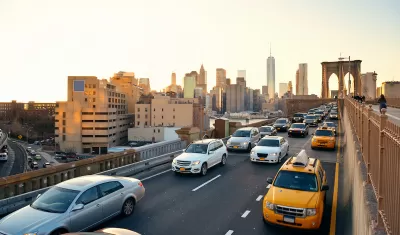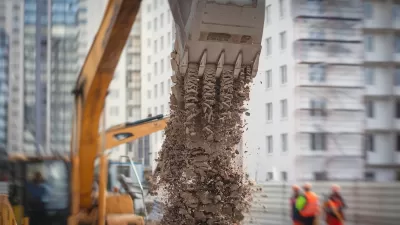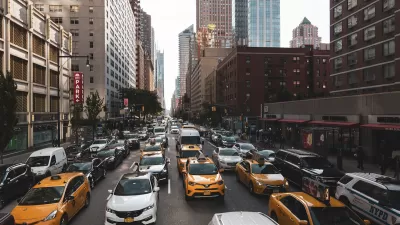New York's long-awaited congestion pricing program could break open the controversial practice in the United States.

New York City’s congestion pricing program, set to launch next year, could pave the way for similar programs in other U.S. cities, which have been reluctant to implement cordon pricing despite its popularity in other parts of the world, writes Adie Tomer in Bloomberg CityLab.
“Congestion pricing isn’t just a new fee on driving; it’s the single most powerful transportation experiment America has not yet tried,” Tomer claims. This demand-driven approach to traffic management can reduce congestion, boost public transit use, and raise revenue. In New York, “the state plans to reinvest nearly 100% of the congestion revenues back into the MTA system, shoring up annual budgets today and unlocking expansion plans in the future.”
Tomer believes that once the benefits of the program become evident, more cities will quickly follow suit. “Once congestion pricing gets off the ground, it can unlock the Holy Grail of transportation pricing: vehicle miles traveled (VMT) fees, which would charge for every mile driven, not just those in specific zones.”
FULL STORY: NYC Congestion Pricing Could Unleash a Transportation Revolution

Americans May Be Stuck — But Why?
Americans are moving a lot less than they once did, and that is a problem. While Yoni Applebaum, in his highly-publicized article Stuck, gets the reasons badly wrong, it's still important to ask: why are we moving so much less than before?

Using Old Oil and Gas Wells for Green Energy Storage
Penn State researchers have found that repurposing abandoned oil and gas wells for geothermal-assisted compressed-air energy storage can boost efficiency, reduce environmental risks, and support clean energy and job transitions.

Placekeeping: Setting a New Precedent for City Planners
How a preservation-based approach to redevelopment and urban design can prevent displacement and honor legacy communities.

San Francisco’s Muni Ridership Grew in 2024
The system saw its highest ridership since before the Covid-19 pandemic, but faces a severe budget shortage in the coming year.

Colorado Lawmakers Move to Protect BRT Funding
In the face of potential federal funding cuts, CDOT leaders reasserted their commitment to planned bus rapid transit projects.

Safe Streets Funding in Jeopardy
The Trump administration is specifically targeting bike infrastructure and other road safety projects in its funding cuts.
Urban Design for Planners 1: Software Tools
This six-course series explores essential urban design concepts using open source software and equips planners with the tools they need to participate fully in the urban design process.
Planning for Universal Design
Learn the tools for implementing Universal Design in planning regulations.
Heyer Gruel & Associates PA
City of Moreno Valley
Institute for Housing and Urban Development Studies (IHS)
City of Grandview
Harvard GSD Executive Education
Salt Lake City
NYU Wagner Graduate School of Public Service
City of Cambridge, Maryland





























